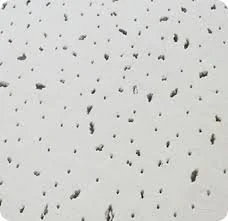Nov . 08, 2024 12:18 Back to list
Metal Wall and Ceiling Access Panels for Easy Maintenance and Installation Solutions
Understanding Metal Wall and Ceiling Access Panels
In the realm of building construction and maintenance, access panels play a pivotal role. They are vital fixtures that allow for easy access to plumbing, electrical wiring, and other critical components hidden behind walls and ceilings. Among the various types of access panels available, metal wall and ceiling access panels stand out due to their durability, security, and versatility.
What Are Metal Access Panels?
Metal access panels are specially designed openings in walls or ceilings that provide access to maintenance areas or hidden systems. Typically constructed from materials like galvanized steel, aluminum, or stainless steel, these panels boast a robust construction that makes them suitable for high-traffic and heavy-duty environments. Their metallic composition ensures longevity and resistance to corrosion, making them ideal for both commercial and industrial applications.
Key Features and Advantages
One of the primary advantages of using metal access panels is their strength and security. Unlike their plastic or drywall counterparts, metal panels can withstand substantial impacts, making them suitable for areas subject to high wear and tear. They can also be secured with locks, providing an added layer of protection for sensitive infrastructure. This feature is particularly critical in facilities that require limited access, such as data centers, laboratories, or manufacturing plants.
Another significant benefit of metal access panels is their versatility in design and application. They are available in various sizes, shapes, and finishes, allowing them to blend seamlessly with the existing architecture. Whether installed in a ceiling to provide access to HVAC systems or in a wall for plumbing systems, metal access panels can accommodate diverse environments. Additionally, they can be used in both new constructions and retrofitting projects, making them an invaluable asset for building managers and contractors.
Installation and Maintenance Considerations
metal wall and ceiling access panel

Installing metal wall and ceiling access panels typically involves a straightforward process, provided that proper guidelines are followed. The installation must consider the location of the panel and the ease of access for maintenance personnel. It’s vital to ensure that the panel is flush with the surrounding surface for aesthetic purposes and that it does not obstruct any critical systems behind it.
Maintenance is another important aspect to consider. While metal panels are designed to endure the test of time, regular inspections can help identify any potential issues, such as rust or damage to the locking mechanisms. A simple wipe-down with appropriate cleaning agents can keep the panels looking new and functioning correctly, ensuring that they serve their purpose effectively for years to come.
Applications Across Industries
Metal access panels find their application in various industries including healthcare, hospitality, and education. In hospitals, they provide crucial access to medical piping and electrical systems without compromising the integrity or cleanliness of the environment. In educational institutions, they allow for easy access to technology infrastructure as schools adapt to rapidly changing educational needs.
In commercial settings, such as retail spaces and restaurants, these panels facilitate maintenance tasks while maintaining a polished aesthetic. Their adaptability and sturdy design make them a preferred choice across multiple sectors, proving that functional solutions can also be visually appealing.
Conclusion
In summary, metal wall and ceiling access panels are essential components in building design and maintenance. Their durability, security, and versatile applications make them invaluable for a variety of settings. By investing in high-quality metal access panels, facility managers and contractors can ensure ease of access to critical systems while maintaining the integrity and aesthetics of their spaces. As construction technology continues to evolve, these panels will undoubtedly remain a cornerstone in achieving efficient maintenance solutions.
-
Quality Ceiling Trap Doors & Access Panels | Easy & Secure AccessNewsAug.30,2025
-
Durable Ceiling T Grid Systems | Easy InstallationNewsAug.29,2025
-
PVC Gypsum Ceiling: Durable, Laminated Tiles for Modern SpacesNewsAug.28,2025
-
Pvc Gypsum Ceiling Is DurableNewsAug.21,2025
-
Mineral Fiber Board Is DurableNewsAug.21,2025
-
Ceiling Tile Clip Reusable DesignNewsAug.21,2025







